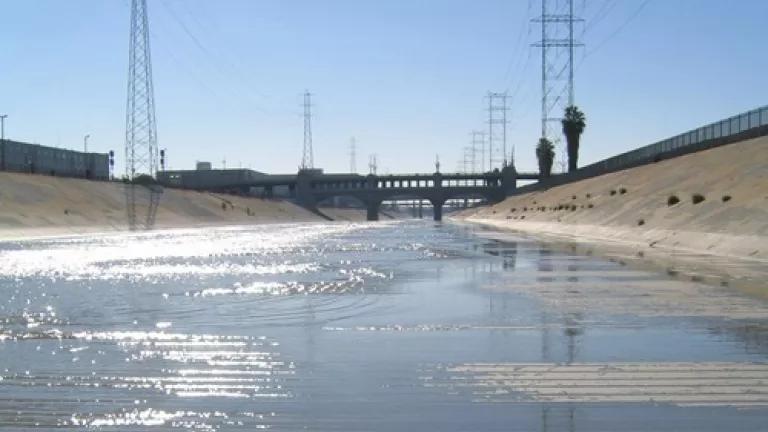
What the Army Corps taketh away, it can give back again. And now, thanks to the persistence of river advocates and Mayor Garcetti, it has. After channelizing the Los Angeles River in concrete starting in the 1930s, the U.S. Army Corps of Engineers is finally joining the chorus from L.A. and recommending the most comprehensive alternative for L.A. River restoration.
Like the River when it ran free, the Corps has changed course – from its initial preference for a far less ambitious option, to the $1-billion "Alternative 20" that river and park advocates, agencies at the local, state, and federal levels, and community and environmental groups, including NRDC, have been pushing. This course change is great news for the L.A. River and a testament to the diversity of voices – from the residents to the kayakers to the architects to the bike commuters to the local elected officials – that have come together to demand nothing short of the fullest revitalization of the River.
The recommended alternative provides the greatest restoration of the 11-mile stretch of the L.A. River from Griffith Park to downtown. More than just restoring natural river functions, however, Alternative 20 reconnects the River to major tributaries and its historic floodplain, reconnects habitat, and reconnects people to the L.A. River. It is the only alternative that would connect the Verdugo Wash to the River, creating a habitat corridor from Griffith Park to the Verdugo Hills. It also improves access to much-needed green space for park-poor communities all along this stretch of the River, by connecting L.A. State Historic Park (the "Cornfields") near Chinatown to the River, restoring and connecting Piggyback Yard in downtown, and connecting Taylor Yard in northeast L.A. to the River. NRDC has a longstanding commitment to efforts to create and expand these parks.
The Army Corps’ recommendation is not the end. Continued efforts by advocates and agencies will be needed to make this collective restoration vision a reality. And challenges remain in ensuring the restoration is ecologically sustainable and environmentally just, not least of which is addressing gentrification concerns. But by listening to community and environmental groups, the Mayor, and so many others and recommending Alternative 20, the Army Corps has given River revitalization a big boost. By continuing to listen to all voices throughout the process of making this recommendation a reality, we can all help restore what L.A. lost in the 1930s – and create a greener, cleaner, healthier, and more connected L.A. of the 21st century.

